Hyperloop: How Elon Musk's Plan Will Work In Pictures
Elon Musk unveiled his plan for a new form of transportation called the Hyperloop yesterday. The Hyperloop is a solar-powered alternative to planes and trains that's less expensive and twice as fast than any other form of land travel, Musk says, and is capable of reaching speeds of 800 miles per hour.
Musk, the CEO of Tesla Motors (NASDAQ:TSLA) and founder of the private spaceflight company SpaceX, heralds the project as an alternative to California’s High-Speed Rail, a project he derides as one of the slowest and most expensive per mile in the world. The total cost of California’s current plan is roughly $68.4 billion, and Musk says his Hyperloop will cost, at most, about 11 percent of that figure ($7.5 billion). The Hyperloop will also travel over three times faster than the proposed high-speed rail, and Musk says the total cost to passengers will be about $20.
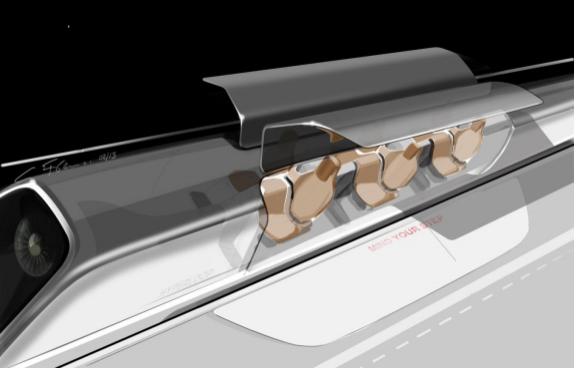
The Hyperloop track described in Musk's proposal will travel from Los Angeles to San Francisco in about 35 minutes. He originally described it as a cross between a Concorde jet, a railgun and an air hockey table. But how does it work? Using diagrams and artist renderings of the Hyperloop, here is how Musk says the Hyperloop will function.
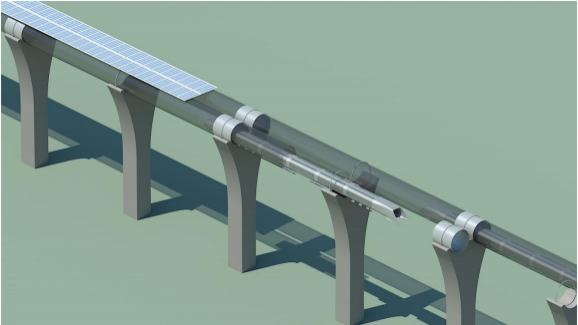
The Hyperloop will derive the energy necessary for transport through a series of solar panels on top of the system. The solar panels, Musk says, are able to generate more power than the Hyperloop will use, thanks to an efficient design.
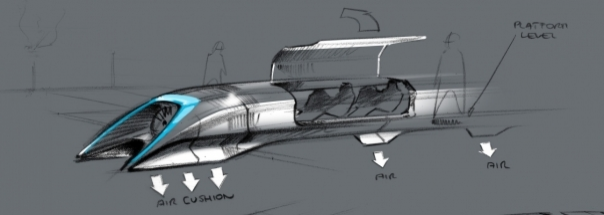
The Hyperloop is a series of train-like pods made out of aluminum, set inside of two steel tubes -- one for each direction. The tubes are located side-by-side and Musk notes that they are constructed about 20 feet in the air, situated on top of pylons, or towers, located 100 feet apart.
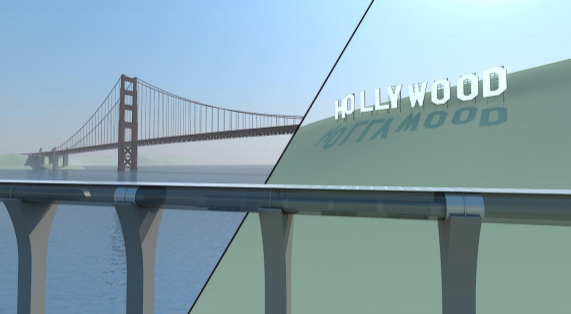
Musk says that the Hyperloop can be built along existing highways for minimal impact, except along sharp turns. The amount of G-force created by turning at high speeds would be too much for a person to be comfortable. So what about farmers and others who will inevitably have the a Hyperloop track in their backyard? Musk claims the Hyperloop’s pylons will be “roughly comparable to a tree or telephone pole” as opposed to the 100 feet of land necessary for the foundation of a high-speed rail.

The Hyperloop’s tubes are not vacuum sealed. Musk contends that maintaining a vacuum over long distances is nearly impossible to maintain. “All it takes is one leaky seal or a small crack somewhere in the hundreds of miles of tube and the whole system stops working.”
Instead, the Hyperloop will function as a “low pressure ... system set to a level where standard commercial pumps could easily overcome an air leak.” However, the air in the system creates a problem for the pod due to the resistance it creates. While the pod itself will be "streamlined to reduce drag," the air between pods is still a factor. Therefore, Musk proposes a compressor fan at each end or "nose" of the Hyperloop's pods that transfers air from its front to its rear. He likens the electric fans to pumps inside of a syringe that reduce the pressure, the fans reducing each pod's resistance while simultaneously lifting them off of the track.
The compressed air will be forced through jets on the bottom of the Hyperloop, similar to the holes on an air hockey table. These "air bearings" will give the Hyperloop lift, similar to how a puck levitates on an air hockey table. However, in the case of the Hyperloop, the puck (or pod) is generating the air necessary to levitate itself.
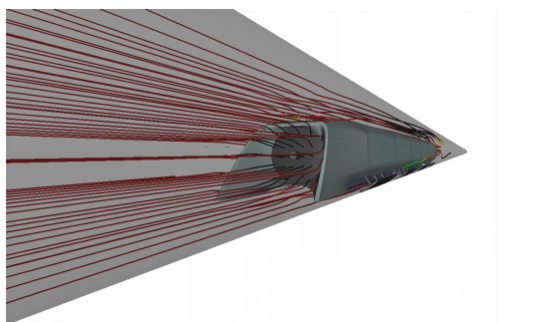
But what propels the Hyperloop forward? The pods are propelled by linear induction motors, a series of magnets supplied with electric current to create a magnetic field. In a maglev train, a magnetic field is used to levitate traincars along a magnetized track. Musk says the method is too costly to be effective, and instead uses a series of induction motors spread over a long distance.
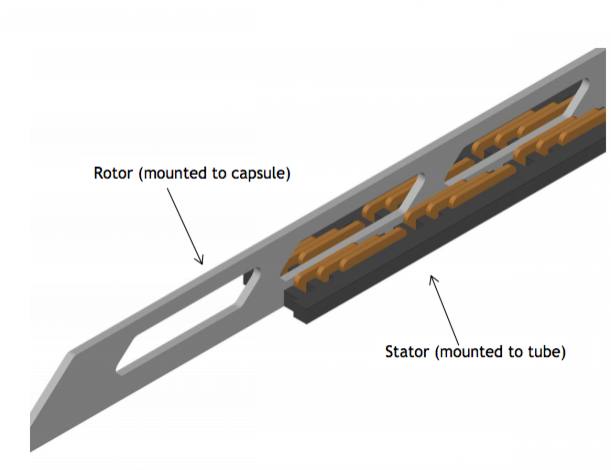
Tracks of magnets located at intervals throughout the tube function as accelerators for Hyperloop. They are also known as stators, or field magnets. A long aluminum blade (called the rotor) interacts with the stator's magnetic field, creating a spinning force that propels the pod forward. The process is similar to how a rail gun works. Musk says the interaction will also stabilize the pod as it travels.
The Hyperloop Alpha proposal is freely available online. Musk says that he decided to publishe the project "open source," meaning that he will not protect the Hyperloop with patents, so that anyone can contribute to the project and any organization can its their own. Musk said he will build a small-scale, working prototype of the Hyperloop to help the project move forward, but currently has "no plans" to construct the project.
International Business Times thanks John Gardi for his explanation of a linear induction motor. Gardi tweeted a Hyperloop plan to Elon Musk prior to his proposal of the Hyperloop, which Musk said was the best guess at the time.
© Copyright IBTimes 2024. All rights reserved.





















